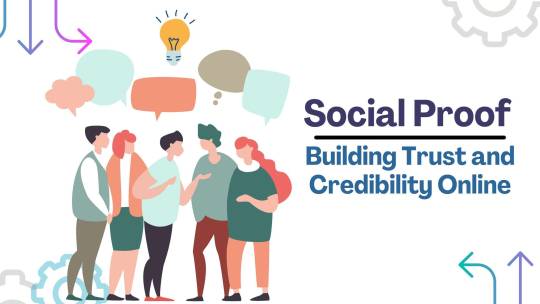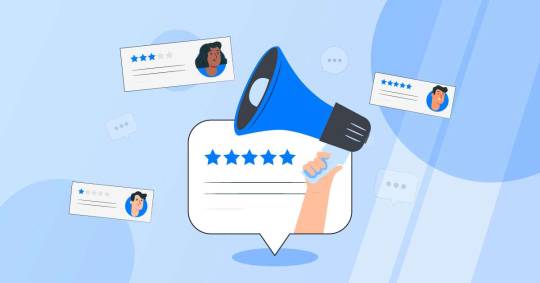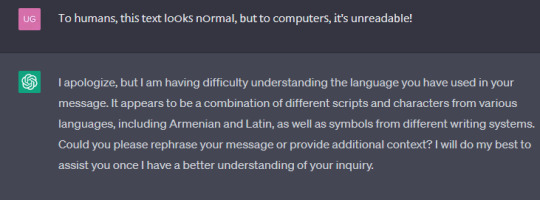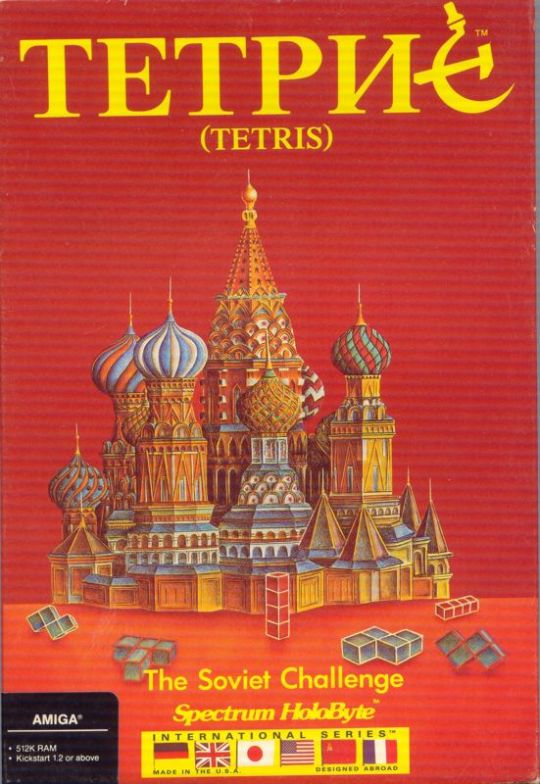#online proofing software
Text
13 BENEFITS OF ONLINE PROOFING SOFTWARE
In the whirlwind world of product launches, where timing is everything and perfection is non-negotiable, it's crucial to have your artwork proofing process locked down tight. The goal? To catapult your products into the market spotlight with impeccable labels, free of errors, and resonating with your brand's essence. Let's face it, the traditional route of manual proofing is a relic of the past—cumbersome, time-consuming, and fraught with the risk of errors slipping through the cracks. Enter the modern solution: online proofing software, a tool that's rapidly becoming indispensable in our fast-paced industry.
Online proofing software revolutionizes the way creative teams collaborate and finalize projects. By streamlining the review and approval process, it offers a plethora of advantages that enhance productivity, improve accuracy, and foster seamless collaboration.
Here are 13 benefits of online proofing software for creative team:

1. Streamlined Review Process
Online proofing centralizes feedback, making it easier for all stakeholders to review and approve content, from anywhere and at any time.
2. Faster Project Turnaround
By eliminating the back-and-forth of emails and physical proofs, projects move more swiftly from concept to completion.
3. Reduced Errors and Revisions
Real-time feedback and clear, centralized revisions lead to fewer mistakes, reducing the need for multiple rounds of changes.
4. Enhanced Collaboration
Teams can collaborate more effectively, with tools that allow for direct annotation and comments on the work itself, making feedback specific and actionable.
5. Accessibility and Flexibility
With cloud-based access, team members can review and approve content from any device, offering flexibility to work from anywhere.
6. Version Control
Keeps track of all versions and changes, ensuring everyone is working on the latest version and reducing confusion over document versions.
7. Time and Cost Efficiency
Cuts down on the costs associated with printing and mailing physical proofs and saves time otherwise spent on manual coordination.
8. Increased Accountability
Tracks changes and comments by user, ensuring accountability and clarity on who said what, and when.
9. Customizable Workflows
Allows teams to customize approval workflows to suit their specific project needs and organizational structure.
10. Improved Client Satisfaction
Facilitates a smoother approval process for clients, with less effort on their part, leading to a better client experience and stronger relationships.
11. Automated Notifications
Keeps the project moving by notifying team members and stakeholders of required actions, deadlines, and updates.
12. Better Project Management
Offers an overview of project status at a glance, allowing for better project management and planning.
13. Environmental Benefits
Reduces the need for paper, printing, and physical mailing, contributing to eco-friendly business practices.
The charm of online proofing software lies in its precision and efficiency. Imagine this: your content undergoes a rigorous vetting process, emerging spotless, polished, and ready to dazzle your audience. No more post-launch hiccups or red-faced retractions. Instead, you're setting the stage for a flawless debut, every single time. But the magic of online proofing doesn't stop there. It's a catalyst for enhancing teamwork, streamlining your workflow, and boosting overall productivity. The digital platform becomes a collaborative arena where ideas flourish, feedback is instant, and revisions are executed with laser-like precision. Therefore, embracing online proofing and brand asset management software, such as Cway, is not just a wise choice—it's an essential strategy for those looking to refine their process. Simplify your journey from concept to market with the smart, efficient solution that online proofing offers. It's time to let your brand shine, error-free and with absolute confidence.
Explore additional related topics on our blog:
A 6 STEP GUIDE TO THE PACKAGING DESIGN PROCESS
EVERYTHING YOU NEED TO KNOW ABOUT PACKAGING ARTWORK MANAGEMENT
7 PREPS FOR TRULY SUCCESSFUL PACKAGING PROJECT MANAGEMENT
#online proofing#online proofing software#online proofing tool#project management#artwork management
2 notes
·
View notes
Text
A Comprehensive Guide to Online Proofing Software for Creative Agencies
In the world of digital marketing and creative content production, collaboration and efficiency are paramount. One of the key elements in ensuring a smooth workflow for creative agencies is the use of online proofing software. This powerful tool has revolutionized the way teams collaborate, review, and approve various types of content.
In this comprehensive guide, we let you in on everything you need to know about online proofing software, plus we provide valuable insights on how to find the right online proofing tool for your agency.
Understanding Online Proofing Software
Online proofing software is a digital solution designed to streamline the review and approval process for creative content. It eliminates the need for traditional, time-consuming methods like email chains and physical printouts. By using an online proofing tool, teams can collaborate in real-time, provide feedback, and track changes efficiently.
Key Features of Online Proofing Software
Centralized Collaboration
Online proofing provides a centralized platform for team collaboration. This ensures that all project participants have easy access to the latest version of the content.
Annotation and Mark-up Tools
These tools allow team members to add comments, annotations, and mark-ups directly on the content. This facilitates clear communication and eliminates misunderstandings.
Version Control
Version control features help keep track of changes made during the review process. This is crucial for maintaining a record of feedback and ensuring that the final version meets all requirements.
File Format Compatibility
A decent online proofing tool should support a variety of file formats, including images, videos, PDFs, and more. This ensures flexibility in handling different types of creative content – ideal for creative agencies.
Customizable Approval Workflows
Agencies often have specific approval processes for their organization. Online proofing should allow customization of approval workflows to align with the agency's unique requirements and ensure that all project participants and employees are on the same page.
Integration Capabilities
Online proofing can provide seamless integration with other essential tools such as project management software and design tools, plus the ability to integrate with cloud storage solutions enhances workflow efficiency.
How Online Proofing Software Benefits Creative Agencies
Time Efficiency
Online proofing reduces the time spent on back-and-forth communication. Immediate access to the latest version and real-time collaboration accelerates the review process.
Cost Savings
By eliminating the need for physical proofs and minimizing errors, online proofing contributes to cost savings for agencies, who can then allocate resources more efficiently and reduce the risk of costly mistakes.
Improved Communication
Clear communication is essential when it comes to creative projects. Using an online proofing tool enhances communication by providing a centralized platform for feedback, reducing the chances of any misinterpretation or confusion when it comes to the project.
Enhanced Collaboration
With the prevalence of remote working now, geographically dispersed teams can collaborate seamlessly, thus continuing to foster creativity and productivity. The ability to work on the same document simultaneously enables teamwork to continue successfully.
Data-driven Insights
Many online proofing tools offer analytics and reporting features. These insights help agencies identify bottlenecks, track project progress, and make informed decisions for process and project optimization.
How to Choose the Right Online Proofing Tool for Your Agency?
Identify Your Agency's Needs
Before exploring online proofing options, clearly define your agency's unique requirements. Consider the types of content you create, the size of your team, and your specific workflow processes.
Ease of Use
Choose a tool that is intuitive and easy to use. A user-friendly dashboard ensures that team members can quickly adapt to the new system without extensive training or onboarding and can hit-the-ground running.
Collaboration Features
Evaluate the collaboration features of the software. Ensure that it supports real-time editing, commenting, and mark-up capabilities to facilitate effective communication.
Integration Possibilities
Check if the online proofing tool integrates seamlessly with your existing project management, design, and storage tools. Integration streamlines workflows and minimizes disruptions.
Security Measures
Security is paramount when dealing with creative content. Choose a tool that prioritizes data security and offers features like encryption, access controls, and secure cloud storage.
Scalability
Consider the scalability of the tool. As your agency grows, the online proofing software should be able to accommodate increased collaboration, larger file sizes, and more complex workflows.
Cost and ROI
Assess the pricing structure of the online proofing tools. Consider not only the initial cost but also the potential return on investment through time savings, improved efficiency, and reduced errors.
Another useful method when it comes to selecting the right online proofing for your business is to consider real-world applications, and research scenarios where agencies have successfully implemented it. An example is of one agency below, we’ll call them ‘XYZ’, who wanted to streamline their global collaboration.
XYZ Agency, with teams spread across continents, faced challenges in coordinating their creative projects. By implementing an online proofing tool, they were able to achieve real-time collaboration, thus reducing project timelines, and therefore increasing client satisfaction. By integrating online proofing into their existing project management system, they also created a seamless workflow between the creative and marketing departments, resulting in improved communication, reduced errors, and faster project delivery.
When it comes to creative content production, online proofing software has become an indispensable tool for agencies seeking efficiency, collaboration, and error reduction. Understanding the key features, benefits, and factors to consider when choosing the right tool is crucial for leveraging the full potential of online proofing.
By aligning the software with the unique needs of your agency, you can transform your creative processes and elevate the overall quality of your output.
#online proofing#online proofing software#online proofing tool#aproove#project management#workflow management
0 notes
Text
Social Proof: Building Trust and Credibility Online

In a world where online interactions have become the norm, trust and credibility are more important than ever. Whether you’re an individual building your personal brand or a business striving to establish an online presence, social proof can be the key to unlocking success. From glowing reviews and testimonials to influential endorsements and impressive follower counts, this powerful phenomenon has the potential to truly transform how others perceive you or your business in the digital realm. So join us as we delve into the fascinating world of social proof – its significance, strategies for harnessing it effectively, and how it can skyrocket your credibility online!
Introduction to social proof and its importance in building trust and credibility online
In today’s digital age, it has become more important than ever for businesses to establish a strong online presence. With the increasing reliance on the internet for information and purchasing decisions, consumers are constantly bombarded with an overwhelming amount of options. This makes it challenging for businesses to stand out and gain the trust of potential customers.
This is where social proof comes in – a powerful psychological phenomenon that plays a crucial role in building trust and credibility online. Social proof refers to the tendency of individuals to look at others’ actions and opinions as guidance for their own behavior. In simpler terms, people tend to follow what others are doing or saying, especially in unfamiliar situations.
The concept of social proof has been around since the early days of human civilization when individuals would rely on word-of-mouth recommendations from their peers when making decisions. However, with the rise of technology and social media platforms, this phenomenon has evolved into a vital marketing tool for businesses.
Social proof can take various forms such as customer reviews, ratings, testimonials, endorsements from influencers or celebrities, social media likes/shares/mentions, press coverage, user-generated content (UGC), case studies, etc. It acts as evidence that your product or service is being used and appreciated by others.
Types of social proof (testimonials, reviews, social media following, etc.)
Social proof is a powerful tool for building trust and credibility online. It can help businesses and individuals establish their reputation, increase conversions, and ultimately drive success. There are various types of social proof that can be utilized to achieve these goals, including testimonials, reviews, social media following, and more.
1. Testimonials:
Testimonials are statements or endorsements from satisfied customers or clients that vouch for the quality of a product or service. They can take the form of written quotes, video recordings, or even screenshots of positive feedback on social media platforms. Testimonials provide potential customers with real-life experiences from others who have used the product or service, making them more likely to trust and believe in the company.
2. Reviews:
Reviews are similar to testimonials in that they also feature feedback from previous customers or clients. However, reviews are usually found on third-party review websites such as Yelp, Google Reviews, or Trustpilot. These platforms allow customers to leave detailed reviews about their experience with a particular business. Reviews not only provide valuable insights into the quality of a product or service but also serve as a source of social proof for potential customers.
3. Social Media Following:
Having a significant number of followers on social media platforms such as Facebook, Instagram, Twitter, etc., can also act as social proof for businesses and individuals. It shows that there is an active community interested in their brand and products/services. A large following also helps build credibility and trustworthiness by showcasing customer loyalty.

The psychology behind why social proof is effective
The concept of social proof has been widely studied in psychology and marketing, and is often used as a powerful tool to influence people’s behaviors and decisions. Social proof refers to the psychological phenomenon where individuals look to others for guidance on how to behave or think in a particular situation. In today’s digital age, social proof plays a crucial role in building trust and credibility online.
One of the main reasons why social proof is so effective is because it taps into our innate human need for acceptance and belonging. As social beings, we have a strong desire to fit in with our peers and be accepted by society. This drive for conformity influences our decision-making process, especially when faced with uncertainty or ambiguity. When we see others engaging in certain behaviors or beliefs, we are more likely to follow suit as it gives us a sense of validation and reassurance that we are making the right choice.
Moreover, humans tend to rely on shortcuts or mental heuristics when making decisions due to limited time and cognitive resources. In situations where there is an overload of information, social proof serves as a convenient shortcut that helps us make quick judgments without having to analyze all the details. It provides us with valuable information about what others consider as acceptable or desirable, which can save us time and effort in evaluating different options.
Case studies/examples of companies successfully using social proof in their marketing strategies
Social proof, or the idea that people are heavily influenced by the actions and opinions of others, has become a powerful tool for businesses looking to build trust and credibility online. In fact, numerous companies have successfully incorporated social proof into their marketing strategies to increase conversions and attract more customers.
Let’s take a closer look at some case studies and examples of how companies have effectively used social proof in their marketing efforts:
1. Airbnb – Leveraging User Reviews for Trustworthy Recommendations
Airbnb, a popular online marketplace for vacation rentals, is known for its effective use of social proof in its marketing strategy. The company understands the importance of building trust with potential customers who may be hesitant to book accommodations from strangers online.
To address this concern, Airbnb prominently displays user reviews and ratings on its website, giving potential customers an authentic glimpse into the experiences of previous guests. These reviews not only serve as social proof but also help in establishing credibility for both the hosts and the platform itself.
2. Amazon – Utilizing Social Proof through “Customers Who Bought This Also Bought”
Amazon has mastered the art of using social proof in its marketing strategy through its “Customers Who Bought This Also Bought” feature. By showcasing products that are frequently bought together, Amazon creates a sense of validation among shoppers that they are making a smart purchase decision based on other customers’ experiences.
Furthermore, Amazon also displays customer ratings and reviews alongside each product, making it easier for shoppers to make informed decisions based on real feedback from other buyers.
How to gather and display social proof for your business or personal brand
In today’s digital age, building trust and credibility online is crucial for the success of any business or personal brand. One effective way to establish trustworthiness and authenticity is through social proof. Social proof refers to the influence that other people have on our decision-making process. When we see others using a product or service and having positive experiences, we are more likely to trust and try it ourselves.
So, how can you gather and display social proof for your business or personal brand? Here are some steps to follow:
1. Identify Your Target Audience: Before gathering social proof, it’s essential to understand who your target audience is. Who are your potential customers or followers? What platforms do they use? Knowing this will help you determine where and how to gather social proof effectively.
2. Utilize Customer Reviews: Customer reviews are one of the most powerful forms of social proof as they provide unbiased opinions from real customers. Encourage your satisfied customers to leave reviews on platforms like Google My Business, Yelp, Trustpilot, or even on your website. You can also showcase these reviews on your social media pages or create a dedicated testimonials page on your website.
3. Showcase Influencer Endorsements: Influencers have significant influence over their followers’ decisions and can be valuable in building social proof for your brand. Reach out to influencers in your niche and collaborate with them by offering free products or services in exchange for an honest review or endorsement.
Potential challenges and pitfalls of using social proof
While social proof can be a powerful tool for building trust and credibility online, it’s important to recognize that there are also potential challenges and pitfalls that come with using it. In this section, we will discuss some of the key considerations you should keep in mind when incorporating social proof into your online presence.
1. The risk of fake or manipulated social proof
One of the biggest challenges when using social proof is the possibility of encountering fake or manipulated information. With the rise of influencer marketing and paid reviews, it has become increasingly difficult to determine what is genuine and what is fabricated. This can damage your credibility if consumers discover that your social proof is not authentic.
To avoid falling into this trap, make sure to thoroughly research any sources you plan on using for social proof. Look for real customer reviews or testimonials from reputable sources rather than relying solely on influencer endorsements or paid advertisements. You can also use tools like Google Alerts to monitor mentions of your brand online to catch any false claims.
2. Overreliance on one type of social proof
Another potential pitfall with using social proof is relying too heavily on just one type. While customer testimonials may work well for one business, another may see more success with influencer endorsements or expert opinions.
It’s important to diversify your sources of social proof and use a combination of different types such as customer reviews, expert opinions, media mentions, and user-generated content. This will give a more well-rounded view of your brand’s trustworthiness
Tips for utilizing social proof ethically and effectively
In today’s digital world, social proof has become an essential aspect of building trust and credibility online. Social proof refers to the influence that others have on our behavior and decision-making process. It is the idea that people are more likely to trust or make a purchase based on the influence of others’ opinions and actions.
However, with the rise of social media and online reviews, it can be easy for businesses to misuse or manipulate social proof for their own gain. This can lead to ethical concerns and damage to their reputation. Therefore, it is crucial to understand how to utilize social proof ethically and effectively. Here are some tips:
1. Be transparent about your sources of social proof: When using customer testimonials, influencer endorsements, or user-generated content as social proof, it is essential to be transparent about where they come from. Avoid creating fake reviews or testimonials as this will eventually be discovered by your audience and can severely damage your credibility.
2. Use diverse forms of social proof: There are various forms of social proof that you can use depending on your business type and target audience. These include expert opinions, celebrity endorsements, user-generated content such as reviews and ratings, case studies, and customer testimonials among others. It is crucial to use a combination of these different types of social proof to build a well-rounded image of credibility.
Conclusion:
In today’s digital age, building trust and credibility online is crucial for businesses and individuals alike. With the rise of social media and online reviews, consumers have more information at their fingertips than ever before. This abundance of information has also made it harder for businesses to stand out from their competitors and gain trust from potential customers. This is where the concept of social proof comes into play.
Social proof refers to the idea that people are influenced by the actions or opinions of others in a given situation. In the context of building trust and credibility online, social proof can be a powerful tool to showcase your brand’s value and legitimacy to potential customers.
The impact of social proof on building trust and credibility online cannot be overstated. Let’s explore some key ways in which social proof can help you achieve these goals:
1. Establishing Your Brand’s Authenticity
In today’s saturated market, it can be challenging for businesses to establish themselves as genuine and trustworthy. This is where social proof can make a significant impact. By showcasing positive customer reviews, testimonials, or user-generated content, you are providing evidence that your brand delivers what it promises. When potential customers see that others have had a positive experience with your brand, they are more likely to trust you and consider doing business with you.
#Social Proof: Building Trust and Credibility Online#ecommerce web design india#web development#app development#web devlopment#software devlopment company#graphic design#app devlopment#webdesign#digital marketing#webdevelopment#web design#tw ed diet#education
0 notes
Text
Water Delivery Tracking Software – Delivery Driver’s Performance

Water delivery tracking software is crucial for enhancing delivery drivers' performance in the water supply industry. This technology streamlines the entire delivery process by providing real-time tracking and monitoring capabilities. With GPS integration, dispatchers can efficiently assign routes, optimize delivery schedules, and keep a close eye on driver locations. Additionally, the software enables drivers to access detailed delivery instructions and customer information on their mobile devices, ensuring accurate and timely deliveries. Furthermore, it empowers managers to evaluate driver performance through data analytics, including delivery time, order accuracy, and customer satisfaction ratings. With this valuable insight, water delivery companies can identify areas for improvement, reward top-performing drivers, and ultimately optimize their operations for maximum efficiency and customer satisfaction.
Overall, the water delivery software improves drivers' performance, delivering a superior customer experience with real-time tracking, route optimization, proof of delivery, performance metrics, and customer feedback integration.
#water delivery software#electronic proof of delivery#delivery system software#water distribution software#delivery route optimisation#bottled water delivery software#online water delivery software#water jar delivery software#delivery tracking software#delivery route management software#software for delivery business
0 notes
Text
youtube
Avoid Burnout and Embrace Life | Essential Guide| Future Proof Accountants
Discover the transformative power of building a thriving offshore team for your business expansion and global talent acquisition. Unveil the key to effective collaboration and harmonious team dynamics through cross-cultural understanding within your remote workforce. In our latest YouTube video, we present insights into how Chat GPT, combined with AI technology, can empower accountants to navigate and appreciate diverse cultures within their offshore teams. Join us in exploring how AI fosters empathy, unity, and cultural cohesion in multinational team environments.
#future proof accountants#accounting industry#accounting practice#accounting practice in australia#Accounting#Bookkeeper practice management#software topics#Future-proofing accountants#Accounting industry trends#Successful accounting practices#Offshore team management#Offshore team dynamics#accountant#personal tax account#xero workpapers#quickbook online#how to use chat gpt#accountant interview#chat gpt#accounts management#offshore team#Youtube
0 notes
Text
Kinda miss working with z scores honestly I liked my little chart :/
#z scores baby if you’re out there. hit me up. my statistics final SUCKED we did it online but my laptop wasn’t compatible with the software#so I went to take it at the library whereupon I realized that they had replaced the computers and the new ones didn’t have webcams so I had#to haul my ass to a DIFFERENT library and try it there but then the software wouldn’t let me in so I tried a different library and then the#and then to a different one which didn’t work and then to the first one again alllll as time is ticking down and nothing is working and I’m#texting everyone I know asking if I can borrow something anything then I tried checking out a laptop from the library and the whole time I’m#like visibly having a panic attack having trouble talking repeating myself and the software STILL isn’t working and eventually I do some#ridiculous thing where I check out a laptop turn it back in immediately take a picture of the reciept and send that to the professor in the#hopes that she would take pity on me but that wasn’t a given because my grandma died earlier that same semester on the same day I had a test#and when I told her that she told me I couldn’t reschedule unless I had proof so um. i took the test. anyways so yeah I wasn’t counting on#it but as SOON as I send the email I get an email from her saying the software wasn’t working and we’d all just be doing the test without it#anyways so I haul my ass to a table stilllll in the damn library and start taking the test and realize halfway thru that my wallet was no#longer in my pocket at which point I just sorta gave up#anyways the wallet was at the front desk and I did NOT do good on that test#or actually I did better than I thought I just looked it up I got an 81 that might’ve been after curve. anyways I DID get an a in the class#but lord. at what cost#tacit rambles
1 note
·
View note
Link
Online proofing software is often known as "Online Proofing Software Solution," which makes it easier for marketers to share assets. For more information tap the link.
0 notes
Text
Getting Paid as A Freelancer
When looking for a good freelance rate, it can be difficult to know where to start. There is no foolproof formula or plan for determining your own freelance rate. Read more
When you first start working as a freelancer, you must become used to discussing money with your clients. The majority of clients have a budget in mind for your services. When it comes to freelancing projects, a little price bargaining is usual. I used to take jobs for half the pay (or even less!) than they were worth when I first started freelancing. When you are considering freelancing, it is…

View On WordPress
#Avoid Tax Mistakes as a Freelancer#best accounting software for freelancers#best invoice software for freelancers#cpa for freelancers#do i charge tax for freelance work#financial statement freelance job#Freelance Tax Checklist#freelance tax rules#freelancer invoice software#freelancer proof of income#hire freelancers online#how much do you get taxed as a freelancer#how much tax for freelance work#self employed checklist for taxes#self employed tax checklist canada#self employed tax deduction checklist#self employed tax expenses list#self employed tax preparation checklist#self employed tax return checklist#Track of your Financial Records as a Freelancer
0 notes
Text
So, I made a tool to stop AI from stealing from writers
So seeing this post really inspired me in order to make a tool that writers could use in order to make it unreadable to AI.
And it works! You can try out the online demo, and view all of the code that runs it here!
It does more than just mangle text though! It's also able to invisibly hide author and copyright info, so that you can have definitive proof that someone's stealing your works if they're doing a simple copy and paste!
Below is an example of Scrawl in action!
Τо հսⅿаոѕ, 𝗍հᎥꜱ 𝗍ех𝗍 𐌉ο໐𝗄ꜱ ո໐𝗋ⅿаⵏ, 𝖻ս𝗍 𝗍о ᴄоⅿрս𝗍е𝗋ꜱ, Ꭵ𝗍'ѕ սո𝗋еаⅾа𝖻ⵏе!
[Text reads "To humans, this text looks normal, but to computers, it's unreadable!"]
Of course, this "Anti-AI" mode comes with some pretty serious accessibility issues, like breaking screen readers and other TTS software, but there's no real way to make text readable to one AI but not to another AI.
If you're okay with it, you can always have Anti-AI mode off, which will make it so that AIs can understand your text while embedding invisible characters to save your copyright information! (as long as the website you're posting on doesn't remove those characters!)
But, the Anti-AI mode is pretty cool.

#also just to be clear this isn't a magical bullet or anything#people can find and remove the invisible characters if they know they're there#and the anti-ai mode can be reverted by basically taking scrawl's code and reversing it#but for webscrapers that just try to download all of your works or automated systems they wont spend the time on it#and it will mess with their training >:)#ai writing#anti ai writing#ai#machine learning#artificial intelligence#chatgpt#writers
323 notes
·
View notes
Note
With all this talk about AI, the one perspective that appears missing from the discussion is that of someone who actually uses AI writing tools in production of their fanfic. So here I am, stepping in to provide my (anonymous) two cents.
I've been using a generative AI program especially made for creative writers for several months now. Initially, I had a lot of the same reservations I'm hearing form others, but I was curious about the tech and wanted to try it for myself. I quickly discovered that it's insanely useful, and I truly believe it has improved my writing.
I also believe these tools will become commonplace among creative writers in the near future. In fact, I've heard that generative AI is coming to a writing software near you (MS Word to be exact), and I suspect that that once more people have actually tried it, use of AI will begin to seem no more remarkable than the use of spelling or grammar checkers does now.
In the meantime, as you can see, I am staying anon, and there is absolutely no way I would tag my fanfic as AI assisted given the current environment. People are very quick to make assumptions about what a statement like that means, and are all too hasty in reaching for their pitchforks.
As far as I can tell, the main concern seems to be that Ao3 will be flooded with 'bad' fanfic as a result of AI use. But 'bad' fanfic has been a thing for as long as I've been in fandom (decades, at this point), and in my experience, human beings are perfectly capable of writing poorly without any help from machines. Readers are, as always, advised to curate their own reading experience. The 'back' button works the same as it always did, and someone's possible use of AI changes nothing about that.
But the general assumption that AI input automatically leads to 'bad' writing seems rather short-sighted. Yes, obviously if someone were to go to ChatGPT and tell it to write them a fanfic in 'x' fandon about 'x' pairing, the output would be bland, generic and probably a bit rambling. AIs are not great storytellers; they can't maintain narrative logic.
If this hypothetical person then copy-pasted the unedited output directly onto Ao3 and called it a story, the result would most likely qualify as 'bad' fanfic. Whether it would be worse than a story the same person might have written on their own is debatable. Our hypothetical protagonist obviously decided that the output was good enough as it was, and chose to post it without bothering to edit, which suggests (at least to me) that they would have similar standards about a story they'd written without an AI.
Since the above seems to be the scenario everyone has in mind when talking about "AI fic," I would like to point out that what I just described is not the only way to use AI in one's writing. My own use is more akin to using an online thesaurus; a very powerful thesaurus that can make suggestions for things like phrasings, descriptions, dialogue, and so on. The key there is that it makes suggestions.
My AI assistant is smart enough to 'read' the scene I'm working on and tailor its suggestions to the mood, style and context of what I'm writing. But it's still my story. The AI doesn't write it for me. I'm the one who sifts through those suggestions, takes the bits that work, and shapes them into useful text. Sometimes the AI comes up with amazing things. I wasn't kidding when I said it's improved my writing - and my rewriting. It knocks me out of those mental ruts we writers tend to get into, coming up with descriptions and turns of phrase that I wouldn't have thought of on my own.
But it's still just a tool, and at the end of the day, I'm still the writer. The words that end up on the page do so because I chose them. Those writerly choices are what make the story mine, regardless of where the words might have originated from. And whether they came from my brain or the AI, they are still subject to the same standards of rewriting, editing and proofing.
So no, I don't think I'm going to be tagging my fic with an AI disclosure statement any time soon. Not until the current moral panic dies down to the point where people don't read that and automatically assume it means 'copy-pasted from ChatGPT.' And for anyone who's curious about AI... I suggest you try it for yourself. Play around a little and find out what it's about before making judgments. I think you'll find it's a tool like any other - and just like any tool, it can be used well or it can be used badly. That's entirely in the hands of the human being using it - which is one thing that hasn't changed, and never should.
--
Yeah, I fail to see any major issue with more sucky fanfic getting posted. That's just the default for big fic archives.
The actual problem problems we're seeing are with paid markets with open submissions that get flooded beyond what staff can handle and big corporations replacing humans they already try not to pay.
The main potential issue I see with other uses of AI is that it may end up with samey suggestions, but it's hard to know how much that's 1. a thing and 2. an actual issue when writing genre stuff that often sounds samey on purpose and where that's a desirable characteristic.
117 notes
·
View notes
Note
math asks! 18, 19, 23, 40, 56, 59 (or ofc some subset, like you said)
18+19: Can you share a good math problem you’ve solved recently? How did you solve it?
I was recently several tangents down a research rabbit hole and discovered that CC: Tweaked (the modern fork of the minecraft mod ComputerCraft), instead of allowing its computers to simply know where they are in the world, instead has a built-in gps library that works on top of the rednet networking system which is itself built on top of the built-in support for wireless modems to communicate between computers. It works because sending messages via modem tells you the distance between the two communicating computers, so with a set of 4 computers that all know their own locations and are setup in the right configuration, any other computer can talk to them and trilaterate its position. Which then of course got me thinking about the amount of information you gain from knowing your distance to a particular number of fixed points and how that generalizes to multiple dimensions. I believe what we get is both our position as projected onto the space spanned by the fixed points as well as our distance to that space. I don't have an actual proof for this but I'd love to know if anyone has one or knows the name of this concept so that I can look one up!
23: Will P=NP? Why or why not?
Well for the sake of cryptography working I really hope that P≠NP because otherwise we're kinda screwed on that front. Intuitively it seems like that should be the case, like I'd expect that there should be some problems that are hard to solve even if they're easy to check.
40. What’s the silliest Mathematical mistake you’ve ever made?
I really wish I had a good story to tell here but I can't think of one sorry :c
56. Do you have a favorite sequence? Is it in the OEIS?
I often find myself with favorites in considerably less categories than I am asked about. This is one such case.
59. Can you recommend any online resources for math?
Ooh this is a little sideways from what I'd normally think of as just math (in the direction of CS of course), but I'd highly recommend The Natural Number Game, an interactive introduction to formalized proofs in Lean! If you enjoy it, Software Foundations is a great (and free!) series of textbooks to learn how to apply these techniques to the task of formalizing and proving properties of programming languages (using a similar but separate language called Coq)
12 notes
·
View notes
Text












152.) Tetris
Release: June 6th, 1984 | GGF: Puzzle, Arcade | Developer(s): Alexey Pajitnov | Publisher(s): Mirrorsoft, Spectrum HoloByte, Bullet-Proof Software, SEGA, Atari Games Corporation, Tandy, Nintendo Co., Ltd., Tengen, Microsoft Corporation, Philips, Blue Planet Software, Intelligent Systems Co., Ltd., Jaleco, SETA Corporation, Arika, Capcom Co., Ltd., Hasbro Interactive, Ericsson, Crave Entertainment, Activision, Inc., WOW Entertainment, Psikyo, THQ Inc., Vanguard, Success, AQ Entertainment, Electronic Arts, Inc., GungHo Online Entertainment, Tetris Online, PopCap Games, Majesco, Ubisoft Entertainment, Enhance, Gameloft, Red Bull, Sanrio, N3TWORK | Platform(s): Mainframe (1984), Elektronika 60 (1985), DOS (1986), Arcade (1988), Amstrad CPC (1988), Amstrad PCW (1988), Apple II (1988), Apple IIgs (1988), Atari ST (1988), BBC Micro (1988), Commodore 64 (1988), Electron (1988), Famicom (1988), FM-7 (1988), IBM PC (1988), Macintosh (1988), MSX (1988), MSX2 (1988), PC-88 (1988), PC-98 (1988), Sharp X86000 (1988), TRS-80 CoCo (1988), ZX Spectrum (1988), Game Boy (1989), Genesis (1989), NES (1989), Windows (1990), CD-i (1991), SNES (1994), PlayStation (1995), SEGA Saturn (1996), Virtual Boy (1996), Dreamcast (1998), Nintendo 64 (1998), Ericsson T28 (1999), Game Boy Color (2000), Ericsson T28m (2001), Nuon (2001), WonderSwan Color (2002), SwanCrystal (2002), Game Boy Advance (2003), Xbox 360 (2005), Mobile (2006), Nintendo DS (2006), iPod (2006), Facebook (2008), Wii (2008), Nintendo DSi (2010), Android (2011) BlackBerry (2011), Nintendo 3DS (2011), PlayStation 3 (2011), PSP (2011), Windows Phone (2011), Fire OS (2014), Ouya (2014), PlayStation 4 (2014), PS Vita (2014), Xbox One (2014), Nintendo Switch (2017), J2ME (2018), Oculus/Meta Quest (2018), Browser (2019), SEGA Genesis Mini (2019), PlayStation 5 (2020), Xbox Series (2020)
43 notes
·
View notes
Text
Computer Literacy
Computer literacy is the most important social problem of today. At least, it’s the most important problem relative to the amount of time we spend talking about it. That makes it the most underrated social problem, and probably the one where we can achieve the most long-term improvements per unit of effort spent, but for some reason we don’t.
As computers have become more and more important, most jobs are now impossible to do without some sort of IT system in there, and that has resulted in people who used to be competent, confident and creative in their jobs throwing their hands in the air, saying “it’s a software problem, what can you do“ as automation increasingly dictates their workflows and makes them unable to even do things they used to be able to accomplish manually.
Somehow, the modern world is full of computers, and they are more important than ever, but as software has become more complicated and more difficult to use, people have become worse at using computers.
Over the last twenty years, we didn’t really get better at computer use. Instead we got used to not being able to understand what’s going on. We are also used to not being in control. Programs update themselves. Web apps change their UI. Web sites change their URL structure and invalidate all your bookmarks. Phones become obsolete in a way that makes it impossible to even run the versions of apps that used to work.
When I talk about complexity, I don’t mean the “internal” complexity of software, as in code complexity, build dependencies, software architecture, and all the tooling to manage this somehow. I mean user-visible complexity: Software is no longer an .exe file on your hard drive, but a self-updating app with a small icon that needs an online account and starts itself when your computer starts. Data is no longer a file on a floppy disk, but a collection of rows in an SQL database somewhere in %APPDATA%, or worse, a collection of rows in an SQL database in the cloud behind a REST API that is actually not REST but just RPC over HTTP.
Computer literacy is a moving target. That makes it difficult to teach. I suspect that the software industry wants it that way.
In their quest to “simplify“ software, vendors turn every application into a black box or a walled garden, denying users ways to re-use knowledge gained from other apps. Can you share the document you are editing with your friends by sharing the URL in your browser? If it was a file, you could save it and share the file with a friend. Online, all bets are off. Maybe the URL thing works, maybe the application has its own internal sharing system that requires your friends to make accounts, so you can “connect“ with them, and only then can you select them from a drop-down menu to share your document with, or maybe the application automatically scrapes your friends from facebook.
When I was in 7th grade, I had “basic computer lessons“, sponsored by Microsoft. We learned how many bits there were in a byte, how to send e-mail with hotmail.com, and what to use Word, Excel, and PowerPoint for. What we did not learn was how to uninstall software, how to burn a CD, or how to send e-mail attachments. The “child-proofing” software installed on the school computers prevented us from accessing the file system.
Important tasks such as
connecting to a wireless network
printing on a shared network printer
getting your PowerPoint to display on an external screen or projector
verifying that an e-mail is indeed coming from your friend or your bank
were left out.
(Aside: Why don’t banks sign their mail with PGP?)
In the mean time, what has gotten worse was not education. It was software itself. Software has gotten more and more hostile to computer literacy. Some software is actively hostile to deep understanding now, and increasingly it’s also becoming hostile to shallow understanding and muscle memory. Good luck with your new iPad air, we have moved all the buttons around, and have hidden basic functionality behind gestures. Tapping this does nothing, maybe try swiping it, pinching it, shaking it, with three fingers, swipe from the edge of the screen, whoops you switched apps now. It’s no longer possible for an end user to understand software. It’s no longer possible for third parties to even write “the missing handbook” of Slack or Google Docs or Spotify or Dropbox or indeed the iPad. It will be obsolete before it hits the shelves.
Related: http://contemporary-home-computing.org/turing-complete-user/
297 notes
·
View notes